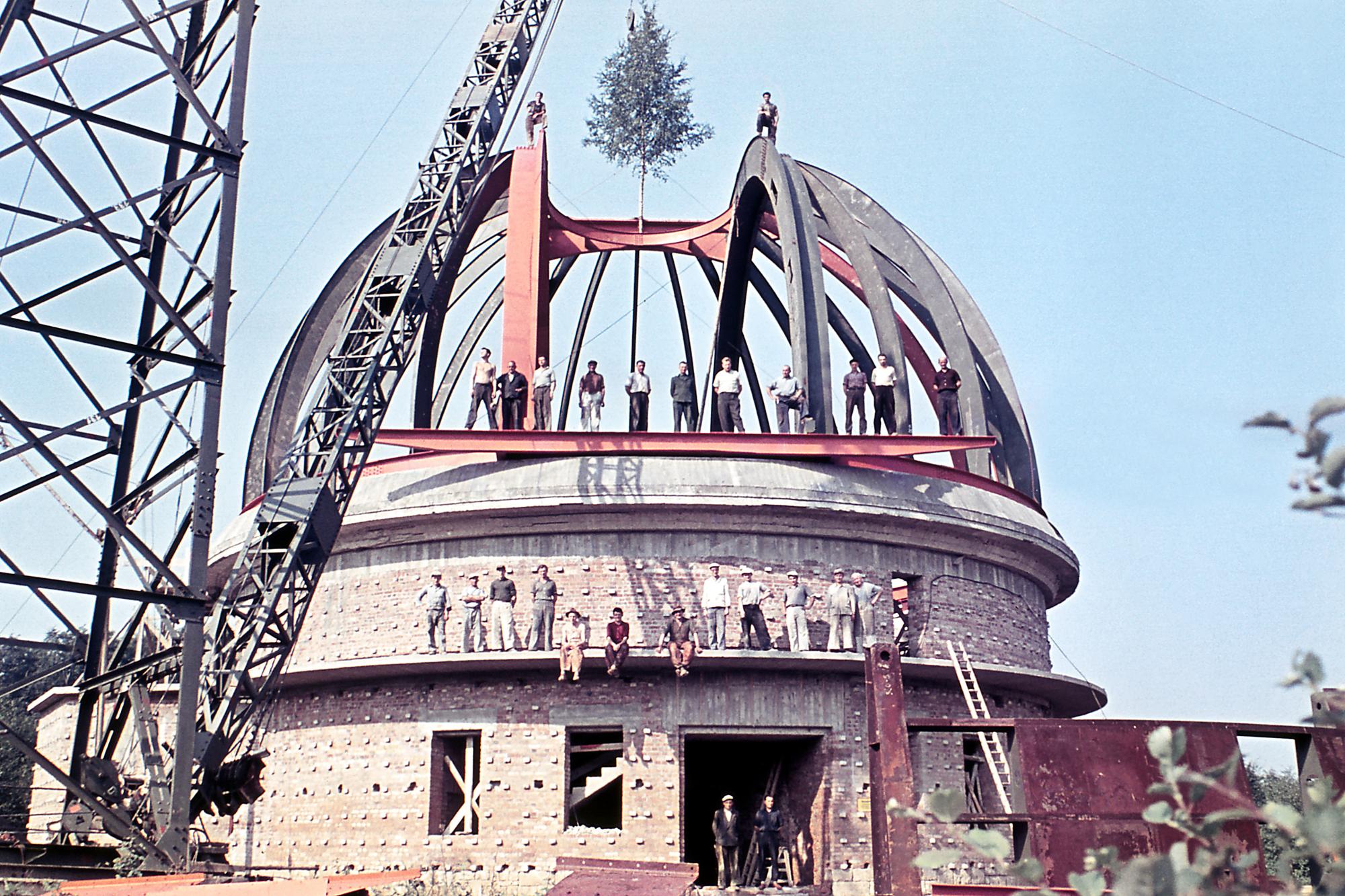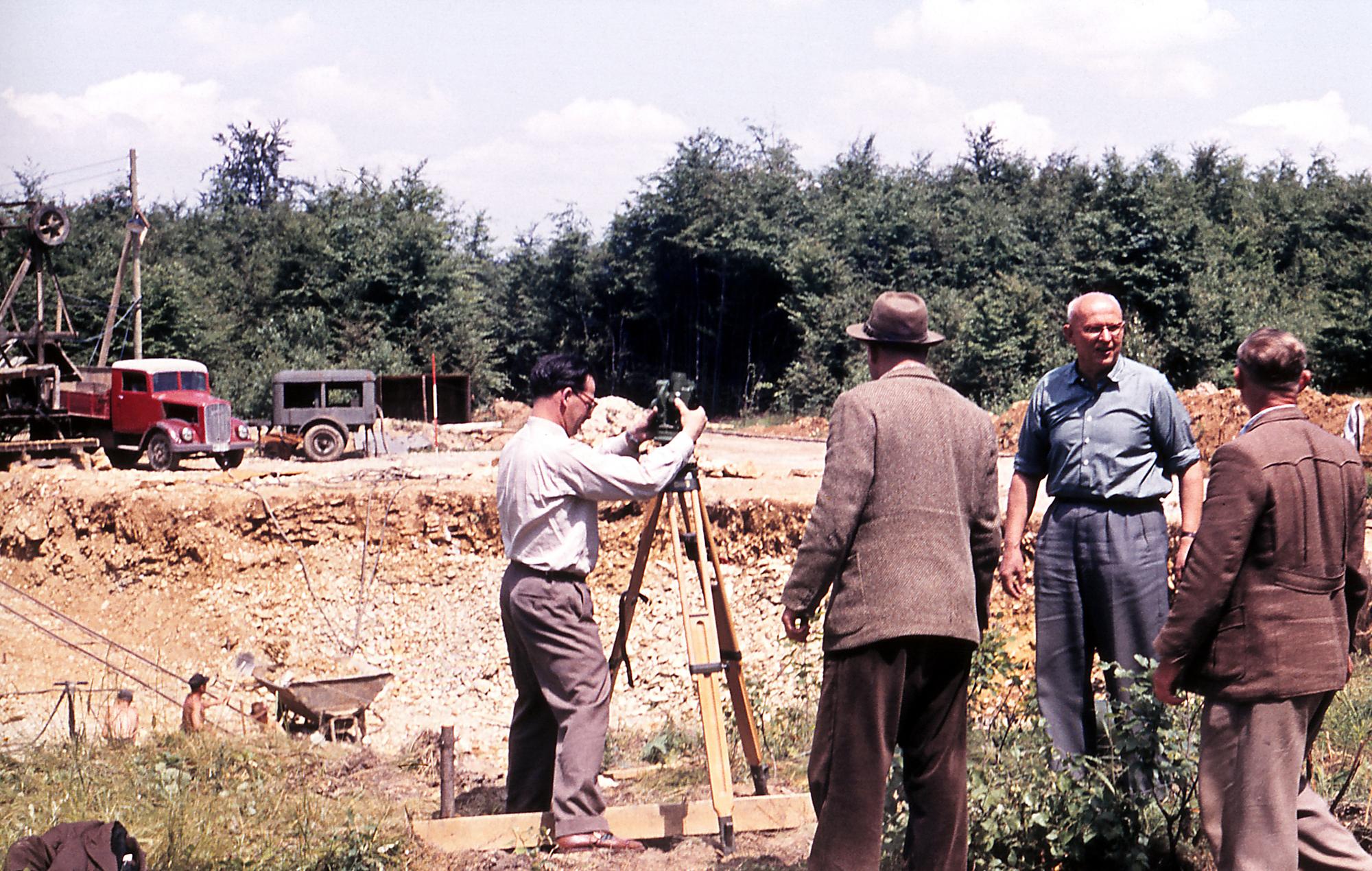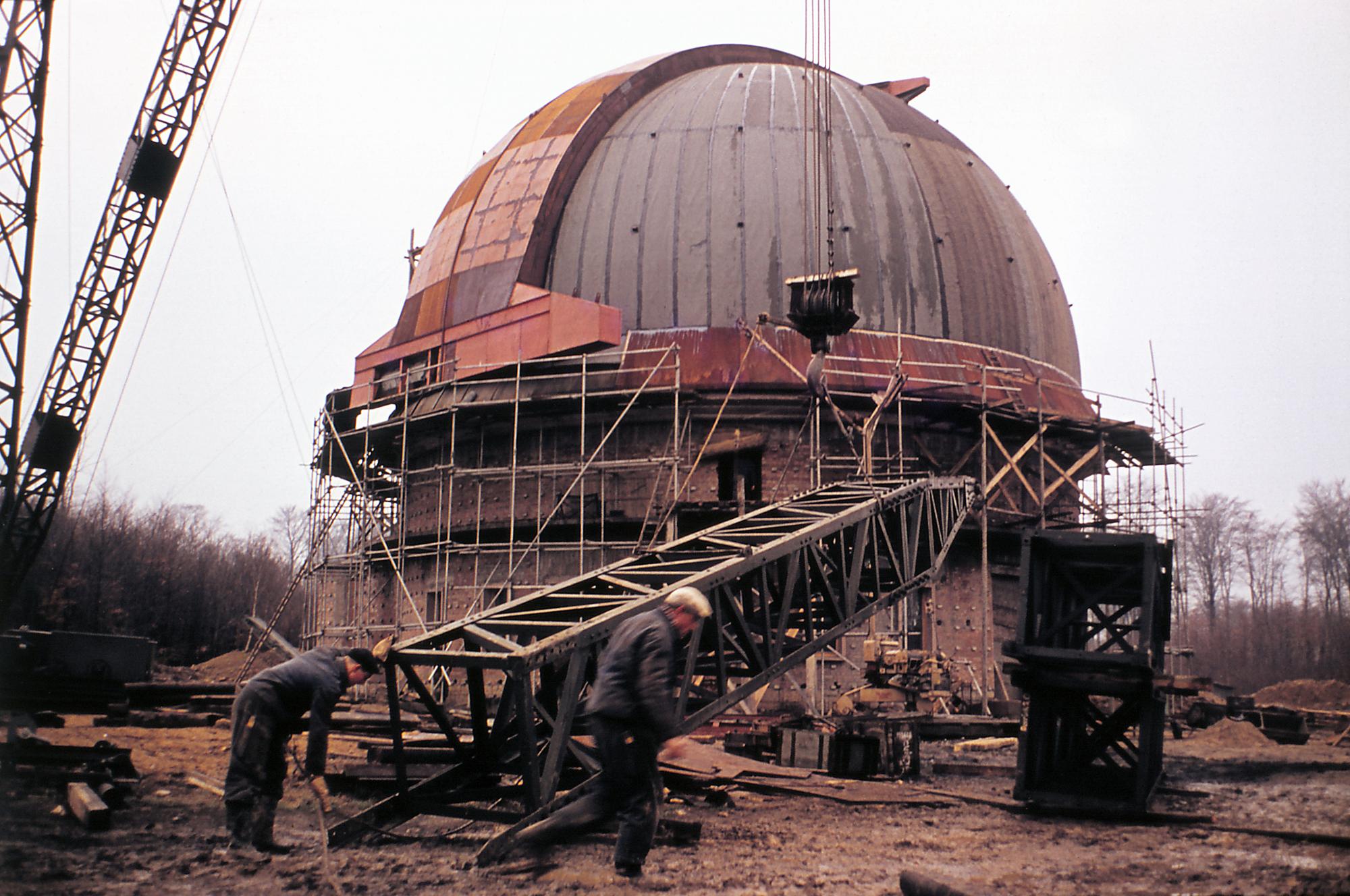
History of TLS in Brief
The history of the observatory in Tautenburger Forst begins in 1947 with a meeting between the then-director of the Astrophysical Observatory Potsdam, Hans Kienle, and senior members of the astronomy department at Carl Zeiss (CZ) in Jena. During this meeting, Kienle explored the possibility of manufacturing a multifunctional large telescope. In hindsight, such an ambitious wish seems remarkable given the war damage and chaos of the immediate post-war period. Nevertheless, at that time, only two larger telescopes were in operation worldwide, both in the USA. As a member of the German Academy of Sciences (DAW) in Berlin, Kienle offered a commission to CZ on behalf of the academy. The Jena optics companies CZ and SCHOTT accepted this challenge, and in early 1948, CZ's management officially confirmed their commitment.
During this period, Kienle was also occupied with plans for a comprehensive restructuring of the astronomical research landscape. He aimed to expand a few particularly well-located observatories into pure research institutions solely focused on observation, not tied to educational institutions, although there should be active personnel exchange between them. He summarized the concept for the planned telescope in a memorandum for the DAW in 1949: it should be a 2-meter mirror telescope with various applications ("universal telescope"), including a variant as a Schmidt telescope. It was supposed to be overseen by a pan-German committee and made available to astronomers worldwide. Each of these points gave the project a unique status in its time.

In the same year as the memorandum, 1949, the DAW commissioned the construction of the 2-meter telescope and its associated dome to CZ Jena. They also established a "2-meter Mirror Commission" under the leadership of Kienle, who, although he accepted a position in Heidelberg in 1950, remained closely connected to the project for many years. Development and construction work in Tautenburger Forst began in 1957. In October 1960, the innovative 2-meter telescope saw its "first light" and was handed over to the DAW by CZ Jena. Simultaneously, the "Karl Schwarzschild Observatory" (KSO) Tautenburg was established, primarily as a service institution to support external astronomers in their observations with the telescope. At the time of its commissioning, the Tautenburg telescope was the fifth-largest in the world, with the four larger ones located in the USA. In its classic Schmidt camera variant, it remains the largest telescope of its kind to this day. In recognition of the achievements of its chief designer, who developed the technical concept and many technical details, the telescope was named the "Alfred Jensch Telescope" in 1992.
Initially, the KSO was an independent institution of the DAW, but in 1969, it became affiliated with the newly established Central Institute for Astrophysics and in 1972 with the Academy of Sciences (AdW) of the GDR. In its early years, it had a pan-German committee that worked until 1965. Early scientific projects included one of the first large-scale quasar search programs and the study of the stellar content of the Andromeda Galaxy. After reunification, the observatory, like all AdW institutions, underwent scientific evaluation. Following the recommendation of the Science Council, the Thuringian State Observatory (TLS) was established by the Free State of Thuringia on January 1, 1992, as a public-law institution based on the assets of the KSO. In the 1990s, a comprehensive restructuring of all areas of the institute began.

The establishment of TLS, in particular, provided the opportunity for the development of a research institute with a broad research profile. The focus is on the acquisition, analysis, and interpretation of observational data, including participation in the development of additional instruments for international observatories. TLS currently operates three telescopes on its premises. The 2-meter telescope, modernized in several stages, continues to provide valuable service. In 2018, a new CCD camera with a field of view of 1.7 square degrees was put into operation for the Schmidt variant.
In 2005, a small automated telescope called TEST was added, and in 2010, the Tautenburg station of the European-wide LOFAR radio telescope was inaugurated. In addition to the Tautenburg telescopes, scientists from the State Observatory make extensive use of observation opportunities at international facilities, including major observatories and space telescopes. Scientists from TLS also actively participate in astrophysics education at various universities. Since 2005, there has been a cooperation agreement with the Faculty of Physics and Geosciences at the University of Leipzig.

